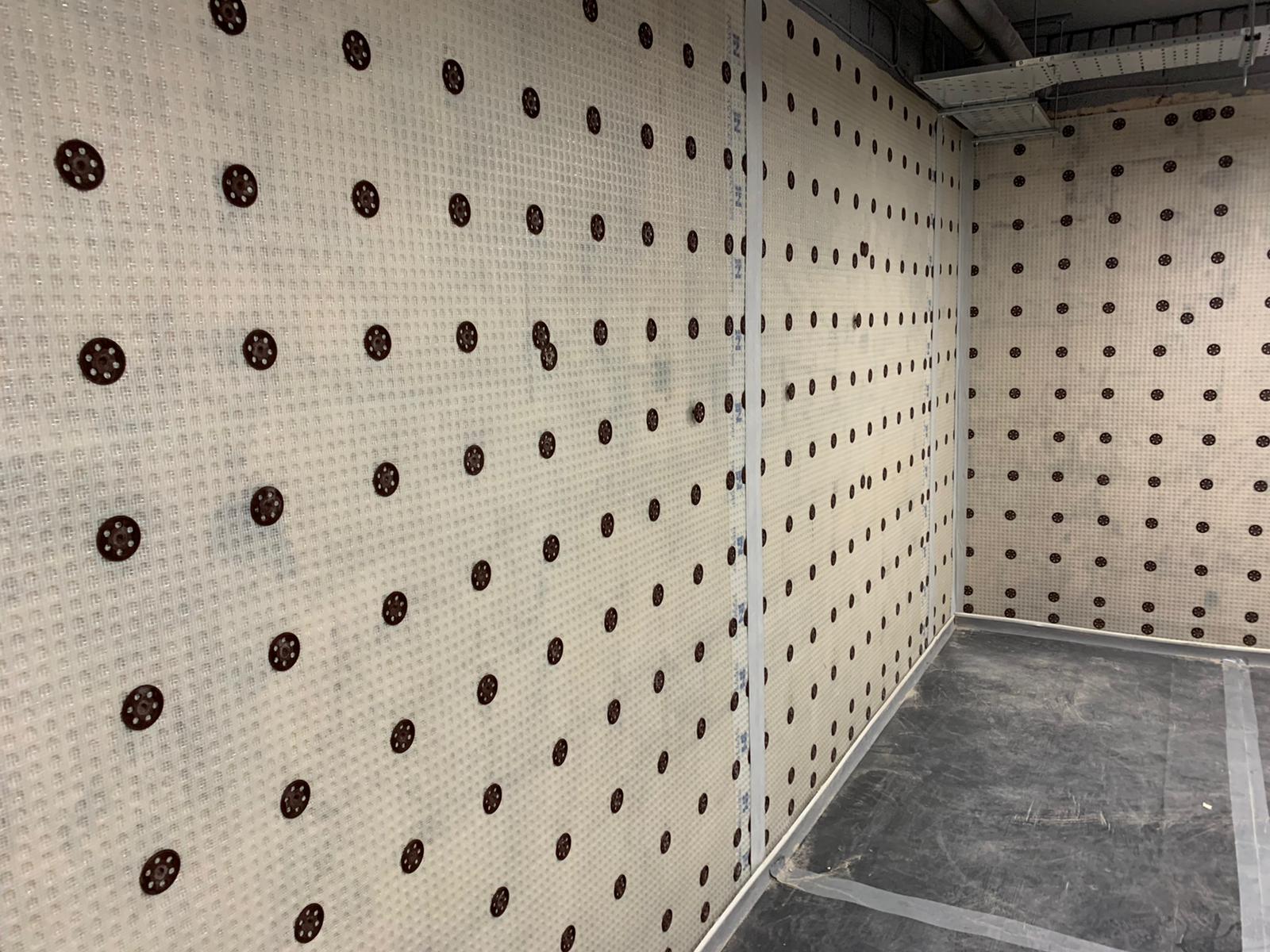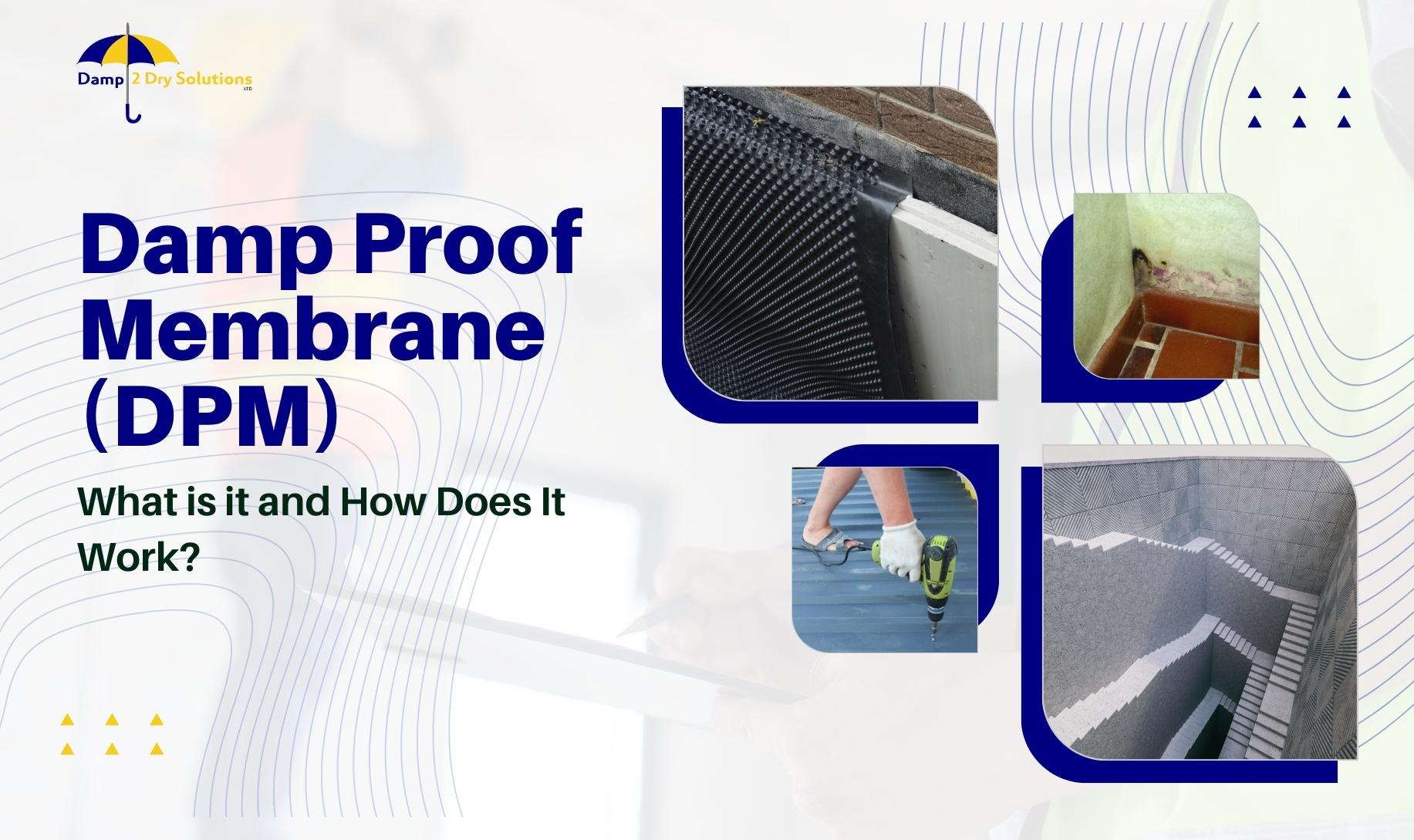How come damp removal newcastle is your best option against household mold
How come damp removal newcastle is your best option against household mold
Blog Article
Understanding the Significance of Damp Proofing in Fighting Structural Damages
Damp proofing acts as a crucial defense versus wetness infiltration in structures. This safety step can prevent considerable structural damage, yet numerous homeowner remain not aware of its importance. Identifying the indicators of dampness and comprehending the different options available can be essential. However, overlooking wet proofing can result in serious repercussions. What are the details threats and solutions that home proprietors should take into consideration?
What Perspires Proofing and Exactly How Does It Work?
Damp proofing works as a vital barrier against dampness invasion in buildings. damp removal newcastle. This procedure involves applying specific materials and methods to stop water from penetrating walls, floors, and other structural components. Commonly, moist proofing can be attained via the installment of moist proof membranes, finishes, or using specialized sealants.These techniques work by creating a protective layer that inhibits dampness motion, making sure that the interior atmosphere stays healthy and balanced and completely dry. Damp proofing is particularly essential in locations vulnerable to high humidity or groundwater, as it aids keep the honesty of the framework over time.Moreover, reliable damp proofing adds to power performance by avoiding warm loss connected with wet environments. By dealing with possible dampness concerns before they escalate, damp proofing acts as an aggressive measure in guarding structures from the damaging impacts of water damage, inevitably extending their life-span and preserving their value
Common Indicators of Wetness in a Building
Dampness problems within a building can manifest with several recognizable indications that suggest the existence of dampness. One popular indication is the appearance of water discolorations on walls or ceilings, which typically suggests wetness infiltration. Additionally, bubbling or peeling paint can recommend that excess humidity is entraped below the surface area, resulting in degeneration. An additional common indication is the existence of mold and mildew and mold, which grow in damp conditions and can usually be determined by their musty odor. Moreover, an increase in moisture levels can trigger condensation on home windows and other surfaces, highlighting dampness problems. Uneven or warped flooring might signify underlying moisture that compromises structural honesty. Acknowledging these signs early can help mitigate possible damages and keep a risk-free living atmosphere. Routine inspections and timely action are necessary in addressing moisture issues before they escalate.
The Risks of Overlooking Damp Proofing
Overlooking wet proofing can lead to substantial threats to a structure's architectural honesty, as wetness buildup might weaken foundations and walls. Furthermore, prolonged moisture creates an atmosphere for mold growth, presenting serious carcinogen to occupants. Dealing with these dangers is necessary for making certain both security and durability of the building.
Structural Integrity Hazards
When homeowners ignore the importance of efficient wet proofing, they expose their buildings to substantial architectural integrity hazards. Extended wetness seepage can lead to the development of mold and mildew, which weakens fundamental components and can compromise overall stability. Furthermore, excess wetness can wear down concrete and brickwork, resulting in splits and architectural failings. Wood parts are specifically susceptible; they can rot and lose load-bearing capacity, positioning severe risks to the structure's structure. Furthermore, neglected damp conditions might attract bugs, such as termites, which better aggravate architectural degeneration. Eventually, disregarding damp proofing steps can lead to expensive repair work and potential security threats, emphasizing the essential role of positive damp management in maintaining the integrity of residential properties.
Wellness Danger Issues
Exactly how can a relatively minor oversight bring about significant wellness dangers? Neglecting damp proofing can develop a setting for mold and mildew development, which poses significant wellness risks. Mold and mildew spores can set off sensitive responses, breathing problems, and various other wellness complications, specifically in susceptible populaces such as kids, the senior, and individuals with pre-existing problems. In addition, relentless wetness can draw in pests like rodents and insects, which lug conditions that better compromise health and wellness. The presence of dampness likewise adds to a decrease in interior air quality, worsening bronchial asthma and various other breathing disorders. Subsequently, the failing to attend to moist concerns not only endangers architectural honesty but also threatens the well-being of owners, highlighting the vital requirement for reliable damp proofing procedures.
Different Kinds Of Damp Proofing Solutions
Numerous factors can contribute to damp problems in structures, selecting the ideal damp proofing option is important for preserving architectural integrity. Several options are readily available, each customized to details conditions.One common remedy is a damp-proof membrane layer (DPM), typically made from polyethylene or bitumen, which is set up in floors and wall surfaces to avoid wetness access. Another choice is damp-proof training courses (DPC), which are layers of water-proof product placed within walls to block climbing damp.Chemical damp proofing involves infusing waterproofing chemicals right into wall surfaces to create a barrier against dampness. In addition, exterior treatments such as tanking, which entails using a water-proof layer to the beyond structures, can be effective in preventing water penetration.Each remedy has its advantages and is chosen based on the structure's specific concerns, ecological conditions, and lasting maintenance factors to consider, ensuring perfect security versus damp-related damage.

The Cost of Damp Damages vs. Prevention
Recognizing the monetary implications of moist damage contrasted to prevention highlights the relevance of aggressive actions. The prices connected with wet damages can be substantial, consisting of repairs to architectural elements, mold removal, and possible health-related costs. House owners might deal with significant economic stress if comprehensive damage happens, resulting in boosted insurance coverage costs and lost home value.In contrast, investing in wet proofing options is typically even more affordable. First expenditures for avoidance approaches, such as setting up damp-proof membrane layers or improving water drainage systems, are typically surpassed by the lasting cost savings from staying clear of expensive fixings. In addition, stopping wet problems can enhance a property's general worth and charm, making it a wise financial investment. When evaluating the price of moist damage versus avoidance, it becomes clear that taking proactive steps can guard economic interests and keep the stability of the residential or commercial property over time.
Selecting the Right Damp Proofing Approach for Your Building
Which damp proofing method is most ideal for a certain residential or commercial property commonly depends upon different elements, consisting of the building's age, existing wetness issues, and regional ecological problems. For older structures, traditional methods such as bitumen membrane layers or cementitious layers might be more reliable, as they can offer a robust barrier against increasing moist. On the other hand, newer buildings might take advantage of modern-day solutions like infused damp-proof programs, which are less intrusive and can be tailored to particular dampness challenges.Additionally, buildings in areas with high water tables or heavy rains may need more sophisticated techniques, such as tooth cavity wall drainage systems or exterior waterproofing. Home owners should additionally take into consideration the specific products utilized in their structure's building, as some methods might not work. Inevitably, a comprehensive evaluation by an expert can assist residential property proprietors in choosing the most efficient wet proofing technique customized to their one-of-a-kind situations.
Maintaining Your Damp Proofing System Gradually
Routine maintenance of a moist proofing system is important for ensuring its long-term performance and safeguarding a residential property from moisture-related damages. Homeowner should carry out routine inspections to recognize any type of indications of wear or concession in the moist proofing layer. This consists of checking for fractures, peeling paint, or mold growth, which might indicate wetness intrusion.Additionally, it is suggested to tidy seamless gutters and downspouts regularly to avoid water build-up around the foundation. Reapplying sealants or membranes might be required if damage is observed.Engaging expert services for routine assessments can even more improve the longevity of the system. These specialists can give understandings right into possible susceptabilities and advise timely fixings.
Regularly Asked Questions
For How Long Does Damp Proofing Treatment Last Prior To Needing Repair Work?
The long life of wet proofing therapy usually varies from 10 to thirty years, depending on elements such as the approach used, ecological problems, and upkeep methods. Normal evaluations can assist identify when repair services may be required.
Is DIY Damp Proofing Effective Contrasted to Professional Services?
The effectiveness of DIY wet proofing differs considerably. damp specialist newcastle. While some individuals may accomplish acceptable results, expert solutions generally ensure comprehensive solutions, leveraging know-how and high quality materials to stop future concerns more reliably than many DIY attempts
Can Damp Proofing Improve Indoor Air Top Quality?
The concern of whether damp proofing can boost indoor air quality occurs regularly. Effective damp proofing reduces moisture degrees, therefore reducing mold development and irritants, ultimately contributing to a much healthier interior setting for occupants.
Are There Particular Laws for Damp Proofing in Various Locations?
Laws for moist proofing vary by region, frequently influenced by local structure codes and environmental conditions. Compliance guarantees effective dampness control, advertising and guarding frameworks safety and security, which highlights the necessity for adherence to these specific regulations.

What Are the Long-Term Advantages of Proper Damp Proofing?
The long-lasting benefits of appropriate damp proofing consist of enhanced architectural honesty, decreased maintenance costs, improved indoor air top quality, and boosted building value. These advantages add to a much healthier living environment and long term lifespan of structures. Usually, moist proofing can be attained through the installation of wet proof membrane layers, finishings, or the damp proofing newcastle use of specialized sealants.These techniques work by developing a protective layer that hinders moisture activity, making certain that the interior atmosphere remains dry and healthy. Damp proofing is especially essential in locations prone to high moisture or groundwater, as it helps preserve the stability of the framework over time.Moreover, efficient damp proofing contributes to energy efficiency by stopping heat loss linked with damp atmospheres. Neglecting wet proofing can lead to significant risks to a building's structural honesty, as wetness buildup may damage wall surfaces and foundations (damp specialist newcastle). Numerous variables can contribute to damp problems in structures, choosing the suitable moist proofing solution is essential for maintaining structural integrity. Which damp proofing technique is most appropriate for a particular property typically depends on numerous factors, including the building's age, existing wetness concerns, and regional environmental conditions
Report this page